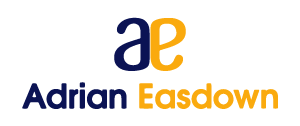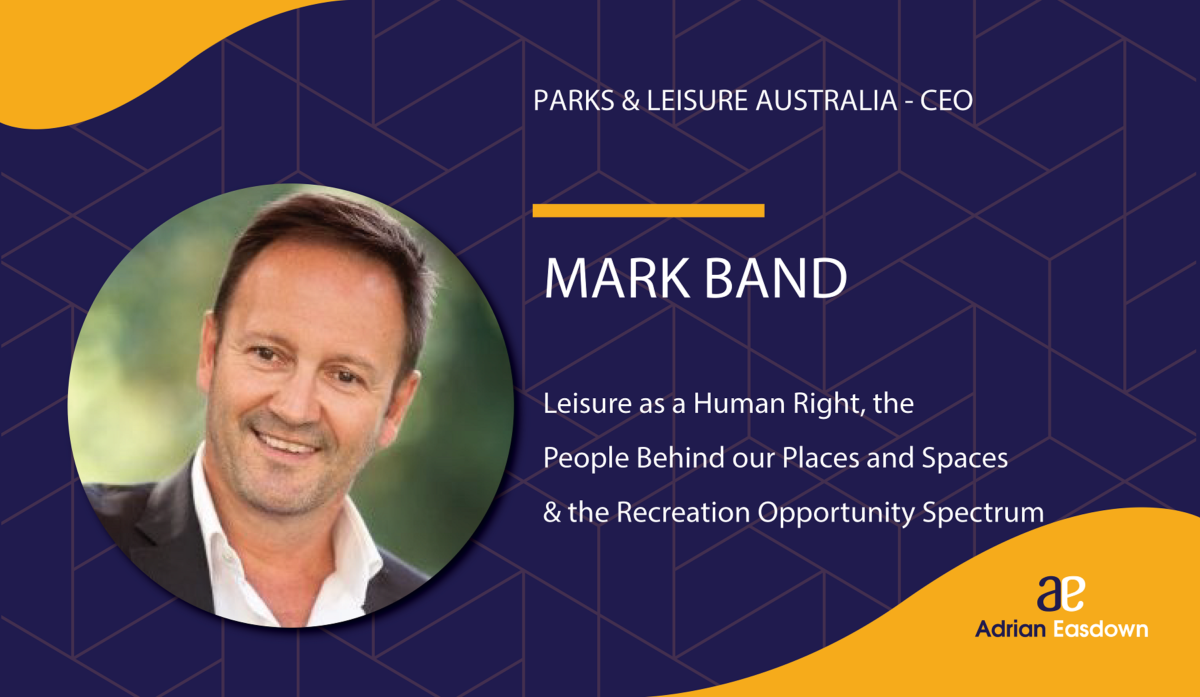Mark Band, CEO of Parks & Leisure Australia, shares with listeners his valuable insights into the Parks and Leisure Industry within Australia and across the globe. Drawing parallels between Australia and his birth country England, Mark describes how the traditional leisure activities that we all enjoy today stem from as far back as the Industrial Revolution.
Mark explains during this week’s episode that the Leisure Industry evolved from a time when people were introduced to set working hours and days. Anything outside their work schedule became leisure time. Land became a commodity, unattainable to the common person. Public houses (pubs) began popping up all over the United Kingdom. This was due to the lack of adequate and affordable housing. Public baths and swimming pools were developed to service the large population without access to bathing facilities. Governments started producing parks for the masses to congregate and socialise in. However, as housing and standards of living evolved, many of these public assets were left in the hands of governments. Consequently they were developed into the leisure assets we see today. Mark remarks during the podcast, ‘The things we take for granted today almost formed themselves into a whole industry’. This is an incredible insight for many.
Leisure as a human right
The evolution of the Leisure Industry highlights the importance of leisure as a human right. In the podcast episode, Mark encourages listeners to take a moment to think about times when they have felt their best. Perhaps it was walking on the beach with family or camping with a group of friends. It’s moments like these, created in the great outdoors, that people often take for granted. If these opportunities were taken away, people would be extremely upset. Restricting access to leisure activities breaches our basic human rights. It takes a whole industry of people behind the scenes to make sure these opportunities are available to everyone. A collective of people who work hard every day, creating places and spaces for people to enjoy.
People behind our places and spaces
Mark informs us that Australia is home to five of the top ten livable cities in the world. Australian’s access to leisure services is partly responsible for this incredible achievement. Parks & Leisure Australia is the national peak body, supporting people from the Parks & Leisure Industry across Australia. Government worker are the majority who make up this collective of three hundred thousand plus leisure advocates. Representatives from private organisations from the Caravanning Industry, as well as consultants make up the remaining balance. Together these advocates promote the good use of leisure time.
During our chat, Mark explains that it’s extremely important that our open spaces are accessible and usable. Eighty-five percent of Australia’s population lives on three percent of Australia’s land mass. As Australia’s population increases, Mark and the association members are trying to ensure that our places and spaces are protected. It’s near impossible to get open spaces back once they have been developed.
We need to protect our open spaces while constantly responding to the changing needs of society. To do this, planners like Mark are creating designs that incorporate adaptable assets, while minimising the environmental impact. Mark explains this further in the podcast. He describes how seemingly unrelated topics such as the country of Singapore, Glamping, a tribe from the Etosha National Park in Namibia and climbing Mount Everest can actually provide case studies to determine best practices within the Parks & Leisure Industry.
The Recreation Opportunity Spectrum
The Recreation Opportunity Spectrum (ROS), is a conceptual framework. It was designed to help clarify relationships between recreational settings, activities and experiences (Clark & Stankey 1979; Clark 1982). Mark explains that it is a useful tool to help understand people’s needs. It helps to understand why some people are satisfied with an outdoor experience in a cabin while others may only receive the same level of satisfaction from an outdoor experience in a tent in the remote wilderness. Academic research suggests that everyone fits along this spectrum somewhere.
The members of the association take the Recreation Opportunity Spectrum into consideration to cater to a wide range of individual needs. The challenge is two fold. How do we best design open spaces and places while minimising the impact on the environment? And how do we do this while taking into consideration the experience and expectations of people who fit anywhere along the spectrum. An incredibly difficult task indeed.
Also in the Podcast
In this episode of the ‘That Bad Review’ Podcast Mark and I also discuss:
- Embracing technology and change
- The history of Parks & Leisure Australia
- Mark’s advice around wealth as a measure of happiness
- Economics driving the agenda over environmental impacts
- Multiuse community facilities vs traditional sporting facilities
- The Parks & Leisure Australia National Conference in October 2019
- Advocacy as priority in influencing governments towards positive change
- Smart Parks and the introduction of augmented reality within our open spaces
- Measuring GDP (Gross Domestic Product) against GPI (Genuine Progress Indicator)
- Links between parks and open spaces on the social, mental, physical and economic wellbeing of Australia

